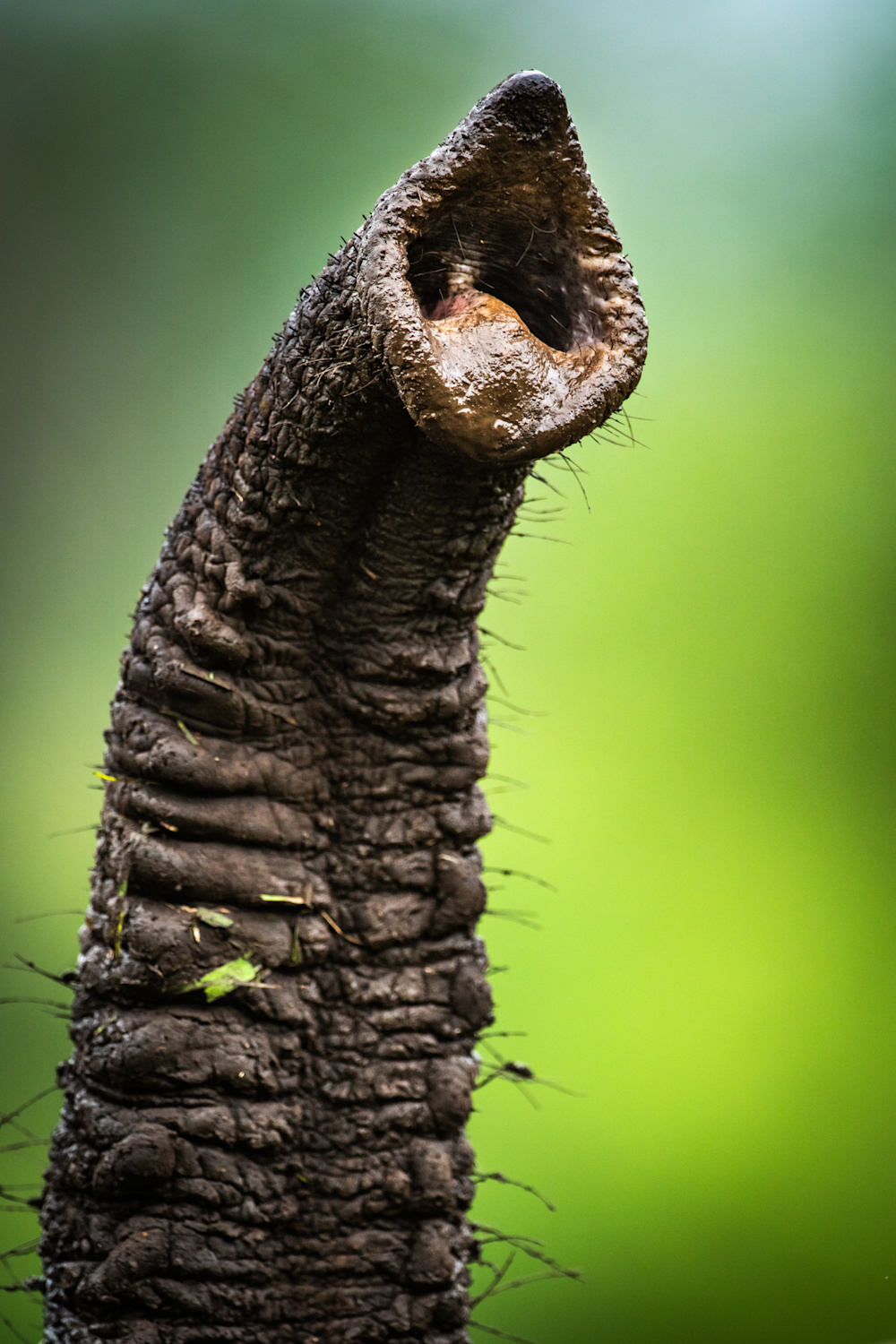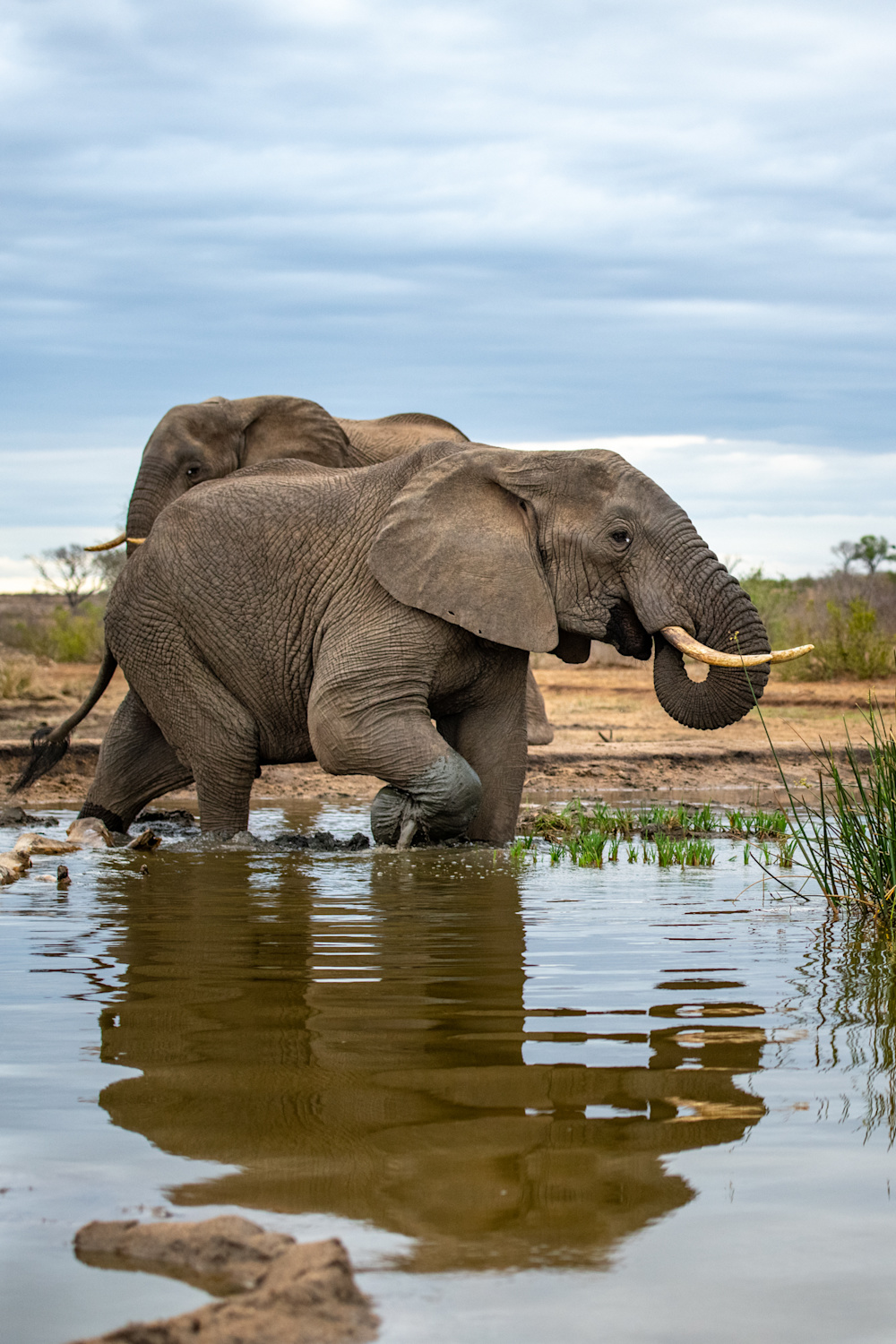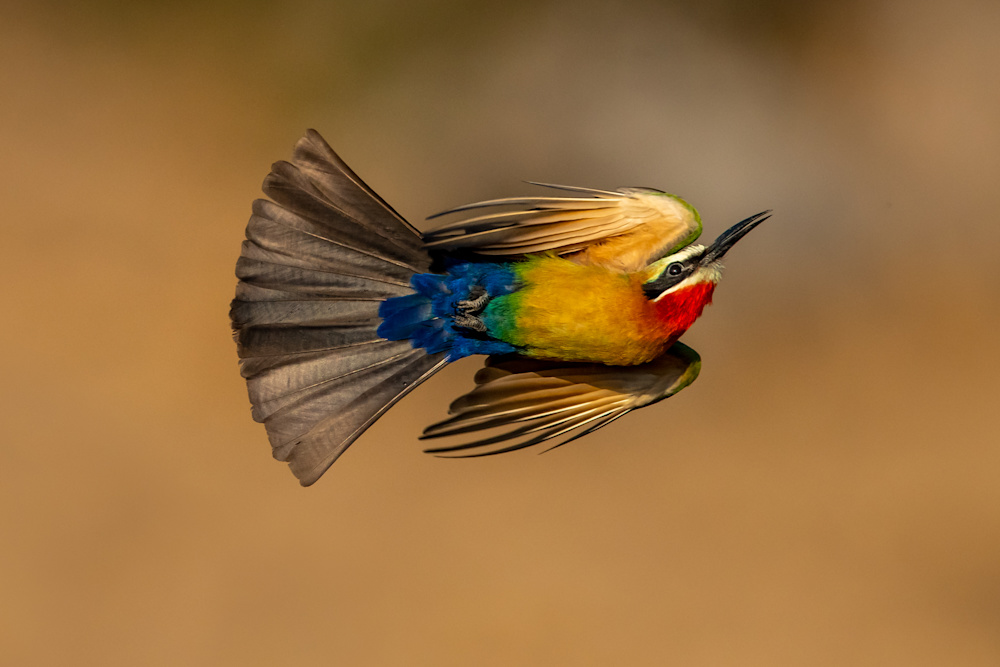April 2022
Singita Kruger National Park: April 2022
Share:
Singita Kruger National Park: April 2022
This month, unlike other years, the presence of autumn is not as telling. The vast amount of rain that has exceeded April rainfall records for the last few years, has confused some dormant seedlings to push through the ground prematurely and has given some deciduous trees and grasses enough motivation to hold on for just a little while longer, resulting in mottled greens and browns and confused limes. The welcomed rains have even confused some of our flowers into blooming ahead of their time. We have also noticed our special endemic tree, the Lebombo euphorbia, starting to flower and standing tall along the Lebombo ridges and its valleys.
The impalas have begun rutting, erupting in deep grunts and boisterous calls that still surprise those within earshot, that a sound so big can be coming out of an animal that size.
We have also recently had a controlled burn that was conducted by the Park management, in the western parts of our Concession. We can’t wait to see a new life that will grow there since the moribund grasses have been reduced.
Here’s a Sightings Snapshot for April:
Lions
We have also recently had a controlled burn that was conducted by the Park management, in the western parts of our Concession. We can’t wait to see a new life that will grow there since the moribund grasses have been reduced.
Here’s a Sightings Snapshot for April:
Lions

This month the Concession held its alias, “The Place of Lions” as we have been very privileged to have multiple sightings of prides and coalitions:
- We often had the Mananga Pride come in from our western border and spend some time in the region of Gudzane Dam. It seems like they are extending their territory eastwards, deeper into the Concession. We had sightings of them in the centre of the Concession, where we usually find the Mountain Pride. The pride has split into two groups, 16 members are traveling, and hunting together, these members have slightly older cubs than the other nine members. The nine members do not travel far because their cubs are still too young to go long distances. However, on occasions where the others have made a successful kill, we find them reunited to share their bounty.
- An unknown pride arrived, coming from the north, which consists of several subadult males, an adult male, and a few females. They were seen for the first time this month around Two Pans, and they have made their way all the way south to the norther parts of the Central Depression. At one stage, they were only a few kilometres north of where the Mananga Pride were resting. We saw this pride three times this month before they made their way back to the north.
- The Xirhombe male was seen a couple of times around the Granophyres. He had been vocalizing, and scent marking, which is a clear challenge to the Maputo and Kumana male, as that region is part of the territory that they occupy. We have not seen him thereafter, and we think he might have headed back to the east towards Mozambique for now.
- The Shish Pride, which had frightenedly separated into a few portions since the Maputo male forcefully entered the Concession last year, are comfortably reclaiming their turf, which lies in the southern parts of our Concession. The portion of five has reunited with the portion of two lionesses and cubs spending a lot of time around the Ostrich Link area. We have only seen two of their cubs, and we think the other five might have been killed by other lions or predators that encroached into their territory. One morning we followed the Shishangaan lionesses heading towards the area where the coalition of five males had been seen. The lionesses were followed by the Maputo male, who is one of their current territorial males, but one of the lionesses was seemingly unpleased with him and was growling at him.
- The coalition of five males was seen on a few occasions on the H6 moving eastwards, past the S37 which is territory we know the Kumana and Maputo males still occupy. On a few occasions, we have seen them mating with a lioness from the Shishangaan Pride.
- The Mountain Pride has been seen on several occasions in and around the Lebombo mountain region, which is the territory that has been held by them for several years, hence the pride name. They are always close enough to the Mozambican border, where they escape when the lion dynamics on our Concession begin to tilt. The pride is in great condition and has been seen feeding on many carcasses over the past month. The subadult male who is around four years old now, is towering over the lionesses, and still being tolerated by the rest of the pride.

Leopards
Our leopard sightings of relaxed individuals are increasing almost every month. This month we have had numerous leopard sightings all over the Concession.
- A very relaxed female leopard was spotted a couple of times in the north around Gundzane North, Quelea, and Bejane. She was seen hunting steenbok and was successful. She was also spotted feeding on an impala kill with her cub.
- In the same area that we had seen the unknown relaxed female, a male leopard was also spotted and he is also very relaxed with the vehicles. We do not have a full history of this leopard but we suspect he might be the father of the cub. He was seen scent marking in the area.
- Our male leopard, who has established himself around the central and northern parts of our Concession, Mbiri-Mbiri male, has been seen on numerous occasions. At a stage, he was seen showing interest in hunting some young zebras. At a previous sighting he had tried and was successful but this time the odds weren’t stacked in his favour. He was again spotted in the basalt grassland with a big male impala kill. It took him about four days to finish the carcass. Later this month he was found in the northern parts of our Concession.
- A large relaxed male has been seen on several occasions around the Central Depression region, and as far west as our western boundary road. He could be the reason that Mbiri-Mbiri is slowly moving north away from that area that he used to frequent.
- After an extended period the Dumbana female, who had all but disappeared from our Concession, as she headed south and west out into the park, has resurfaced with her two male cubs. The first sighting was just west of the Granophyre bush dinner site where both she and one of her cubs had been forced into two different leadwood trees by the Shishangaan Pride who were mere metres away keeping an eye on them. They both eventually managed to escape when the lionesses dropped their guard. Thereafter they have been seen on multiple occasions in and around Nwanetsi too. The south-western parts of the Kruger could have posed a challenge for them to settle as we have often seen both male and female leopards patrolling the H6 on our way to and from the staff village. Whatever her reasons for returning, we are ecstatic to see her back. The two young males have certainly grown significantly and are now nearing their mother's size.
- The skittish leopard that is usually seen in and around Three Trees, Ntoma, and Sisal region has yet again been sighted on a few occasions dashing away from the vehicles, never holding still long enough for a picture. Spotted hyenas
- We have found an established den-site around Ntsimbitsane area. It is very tricky to access with a vehicle but we have seen an adult and young there. One afternoon we found the Kumana male lion and a dead hyena which he was feeding on, near the den-site. It is very strange behaviour for a lion to kill and feed on a hyena or any predator. Usually, they only kill them in competition.
- The hyena population of the Singita Concession also lost another member, but this time belonging to another clan much further in the northern parts of our Concession. Our guide and tracker team were led to his carcass by vultures that dropped down to the ground, and on further inspection there were lion tracks around the region but none had fed on him. They could have killed it or they could have been led there by the vultures.
Elephants

- Elephants sightings have been numerous this month. So much so, that we had a breeding herd check into the Sweni and Lebombo lodge for a few days! Guests enjoyed the sightings from their rooms and dining area. Eventually, on a colder day, they checked out and headed towards the mountains for warmer temperatures and protection from the wind.
- We have spotted a few big bulls with large tusks moving in the Concession, trailing breeding herds of elephants with females who may be ready to mate with them.
- We did not struggle to find elephants at all this month - sightings were all spread out as far south as the N’wanetsi and beyond the northern stretches of the Xinkelengana drainage.

Buffalos
- We had a big herd of buffalos coming into the Concession from our northern boundary, who moved southwards. The herd later split into two groups, one group moved south into the depression and the other group headed south-southwest towards the Gundzane dam area.
- Numerous buffalo bulls were seen across the Concession in bachelor herds and those less lucky were seen wandering alone. The Mananga Pride managed to hunt and feed on one such individual in the Gudzane area.
Plains game


- We have had incredible plains game viewing this month, and it has been nothing short of magical.
- We have seen towers of giraffes, at times surpassing thirty individuals! Large congregations of zebra have been found around the basalt plains and the Central Depression area.
- Impalas, which are one of the most abundant antelopes in the region, still cover every other corner of the Concession and have been providing us with incredible sightings of not only their young who are reaching the seven-month mark, but also the males have started rutting and grouping females for mating opportunities. Other males are forming bachelor groups and some are fighting against each other.
- We have seen several wildebeests in different sizes and shapes in various parts of the Concession and seemingly in great condition. Rare animals and other sightings
- Some of our staff members have been lucky enough to see some caracals on their way to the staff village. They spotted two of these cats moving in the long grass, and they managed to video them as they bobbed in and around the long grasses.
- Two cheetahs were also spotted on the Staff Village Road near the H6 by staff members.
- A pack of six wild dogs was seen around Green Apple Hill on top of the ridge. The next day these marathon runners were spotted on S37, south of H6 public road. We believe they might have headed further south and probably back towards the Mozambican border. We have not seen them since.
- A pack of seven wild dogs has been seen on a few occasions on the Concession. The very first sighting of this pack this month was at Golf Course Clearing and they came south to Xineneni Poort. We saw them chasing impalas but were not successful. Birds
- We have been seeing white-fronted bee-eaters around Dave’s Crossing on the N’wanetsi River. These birds are seldom seen in the Concession.
- The summer migrants have now left, and we have started to see some of the altitudinal/winter migrants arriving back e.g. African stone-chat.
- Some of the special birds seen last month include: kori bustard, open-billed stork, saddle-billed stork, goliath heron, hooded vulture, white-headed vulture, white-backed vulture, lappet-faced vulture, martial eagle, tawny eagle, bateleur, white-backed night heron.
- One of the guides was fortunate enough to see a juvenile African goshawk.



By Jenny Hishin
Author / Field Guide